
Funding code: 03B10704B
Global air travel contributes to climate change through emission of greenhouse gasses such as Carbon dioxide (CO2) and Nitrous oxides (NOx), which can have an even bigger impact on the climate when emitted at altitude [1]. Therefore, save and “green“, or low emission air travel without fossil fuels is a necessity. The current environmental targets of the European Union, specified in the Flightpath 2050 — Europe’s Vision for Aviation — are 75% reduction of CO2 emissions per passenger and kilometre (PAX), 90% reduction of NOx emissions, zero emission taxiing and recyclable aircraft [2].
“Green“ aviation without the use of fossil fuels could be accomplished with battery or fuel cell electric aircraft designs, like the CityAirbus (Figure 1) or a DLR concept (Figure 2), [3]. Such future propulsion concepts are currently developed by engineers and scientists at the Department of Electrical Power Systems at the Helmut Schmidt University, the German Aerospace Centre DLR, the ZAL GmbH and at Airbus Operations GmbH, in the joint project “Fuel Cell System Development for Aviation Technology (BETA)”. In the framework of the NIP – National Innovation Programme Hydrogen and Fuel Cell Technology the BMVI supports the development of H2-to-Torque-Concepts with the project BETA.
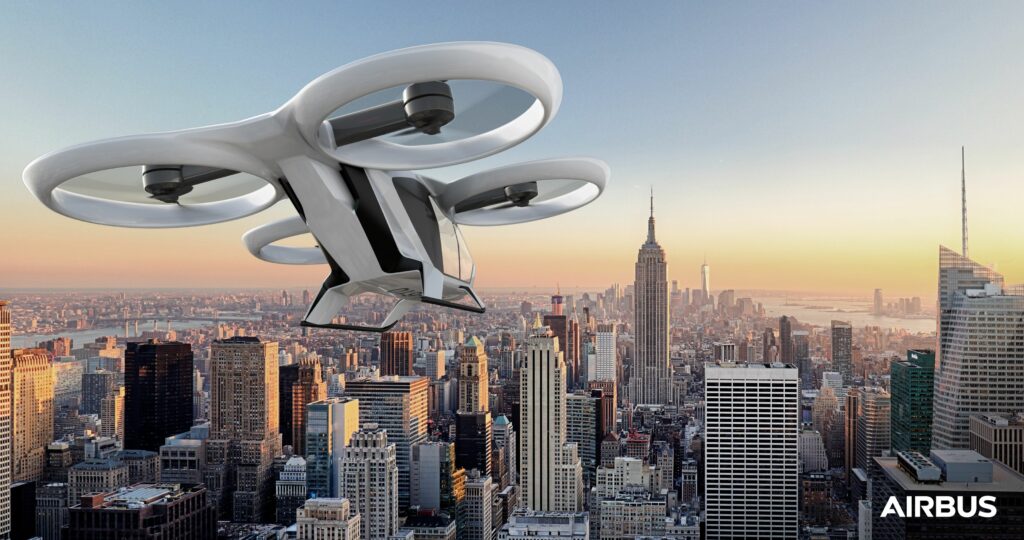
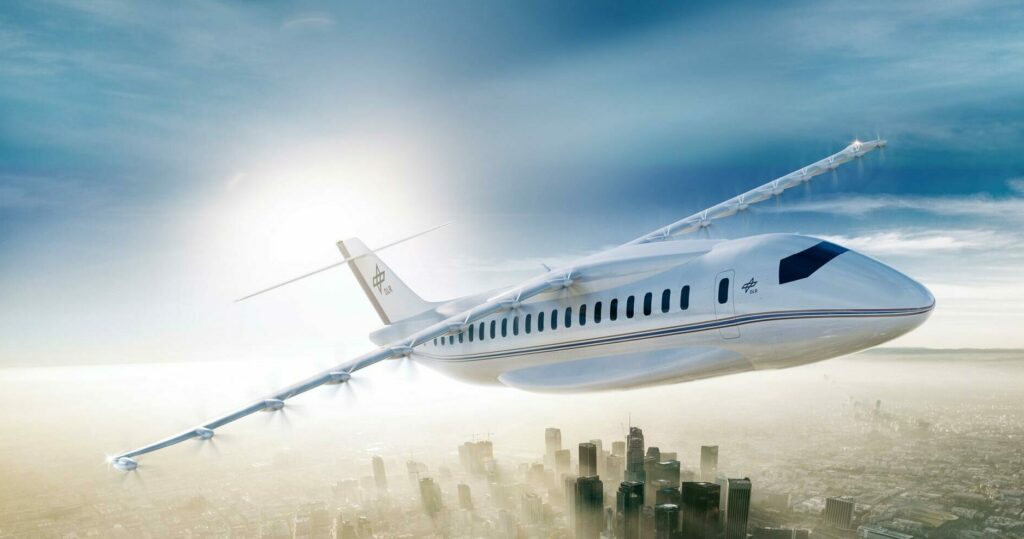
H2-to-Torque
H2-to-Torque could enable novel, zero-emission mobility concepts, which previously were out of the question. H2-to-Torque is a concept where fuel cells are coupled directly with the electric motor, omitting a high-power DC-electrical system. Figuratively, the Hydrogen (H2) is directly converted into mechanical torque at the shaft via the Hydrogen fuel cell. Concepts like The „Pod“ configuration by Airbus (Figure 3) combine all necessary components in each propulsion unit. The topology of the energy supply system changes with this concept: Centralized fuel cell systems with high power DC/DC-converters and DC-links can be omitted. This reduces system weight and material use and, at the same time, increases safety and redundancy. Figure 4 visualizes the H2-to-Torque concept.
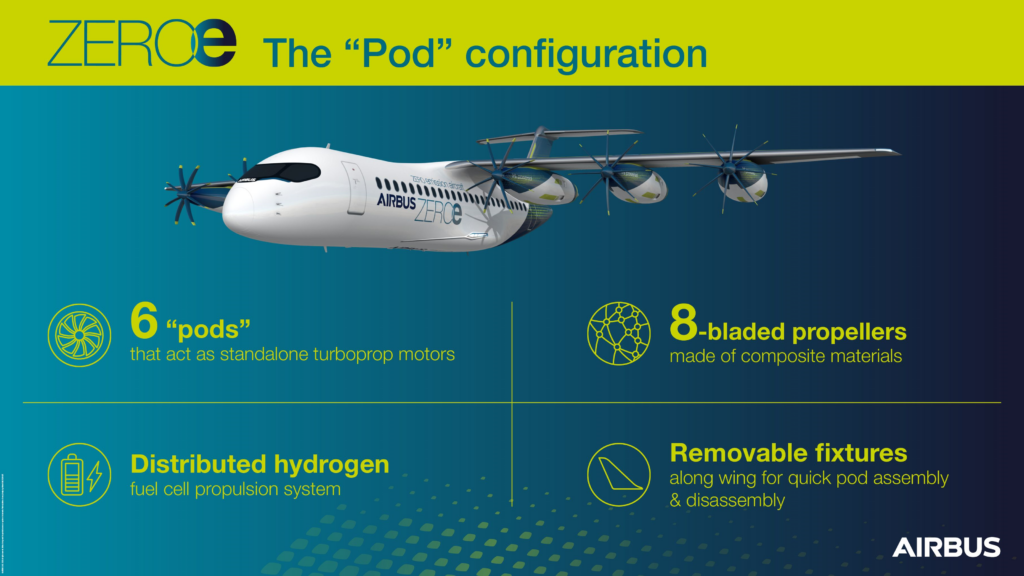
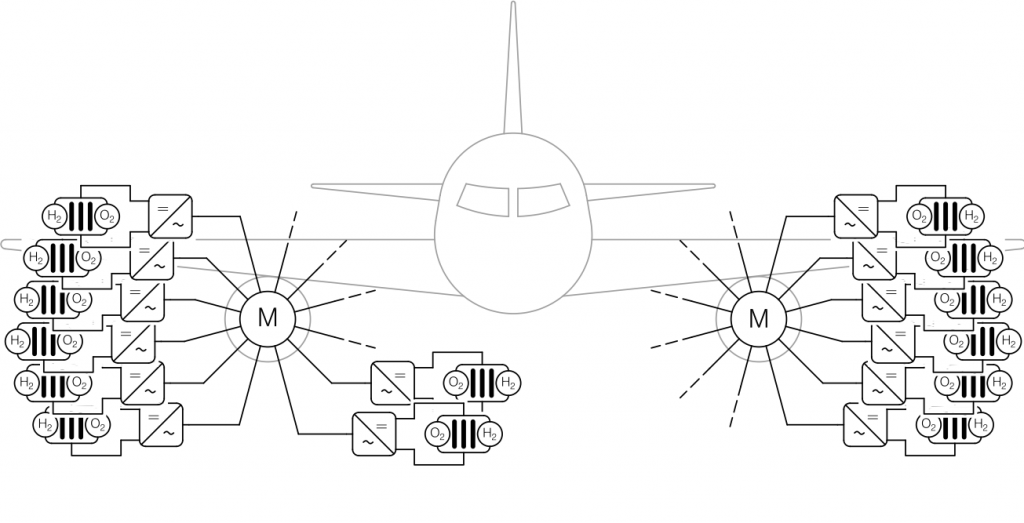
Standard fuel cell systems use a DC/DC-converter to control the DC-link voltage and, thus, the operating point of the fuel cell. A central inverter, which is supplied via a high-power DC-link, facilitates the controlled supply of the motors as shown in Figure 5. Since the new concept renders these components obsolete, new approaches for the control strategy of the motors and the operation of the fuel cell need to be developed.
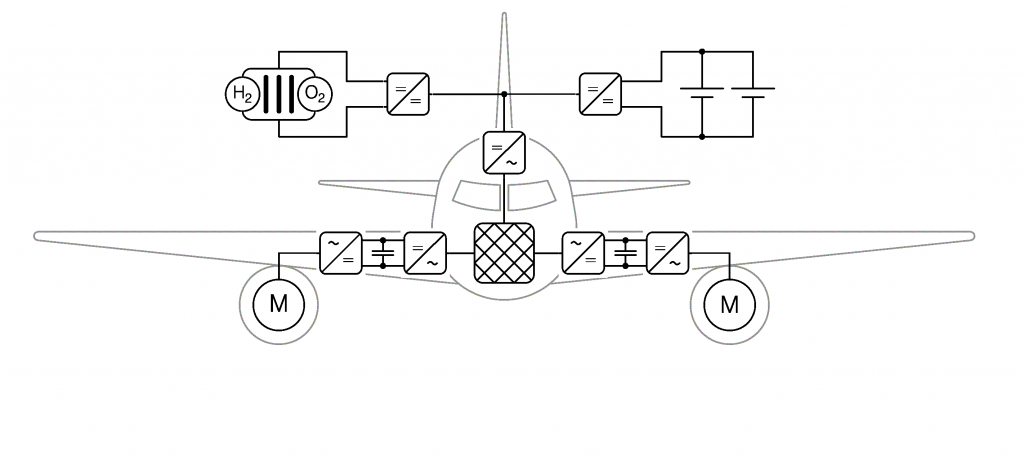
Aim of the Project
In the framework of the project the department develops and tests a motor-control-unit-system (MCU system), which will supply the motor windings with electrical energy. This MCU system consists of protection electronics, a communications link, a state detection and control for each motor winding.versorgt. Das MCU-System besteht aus Schutzelektronik, Kommunikationsschnittstellen, Zustandserfassung und der Ansteuerung für die jeweiligen Motorspulen.
In order to analyze and optimize the MCU system the department will develop a bespoke test rig, which will enable the validation of the MCU-systems functionality and reliability through several test procedures. The information gathered from these tests will be used in the development of the prototype for the full system test rig, which will be able to show the potential of this H2-to-Torque concept. The full system test rig will be built in association with all partners at the ZAL facility.
This development for the integration of fuel cell technology can play an important role in the phase-out of fossil fuels in the mobility sector. Utilisation scenarios range from small aircraft to longe range airliners. Particularly novel mobility concepts such as drones or air taxis can be made emission-free through the use of this Hydrogen technology. Therefore, the project follows the guiding principle set by the aviation strategy of the Federal German Government:
„With its products, the German aviation sector makes a decisive contribution to a clean, efficient air transport system that constitutes a major pillar of the overall economy. As a technology leader, the aviation industry makes a permanent and substantial contribution to value-added in Germany, also for other industries. [4].”
Project Consortium

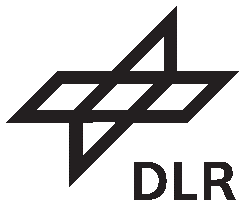
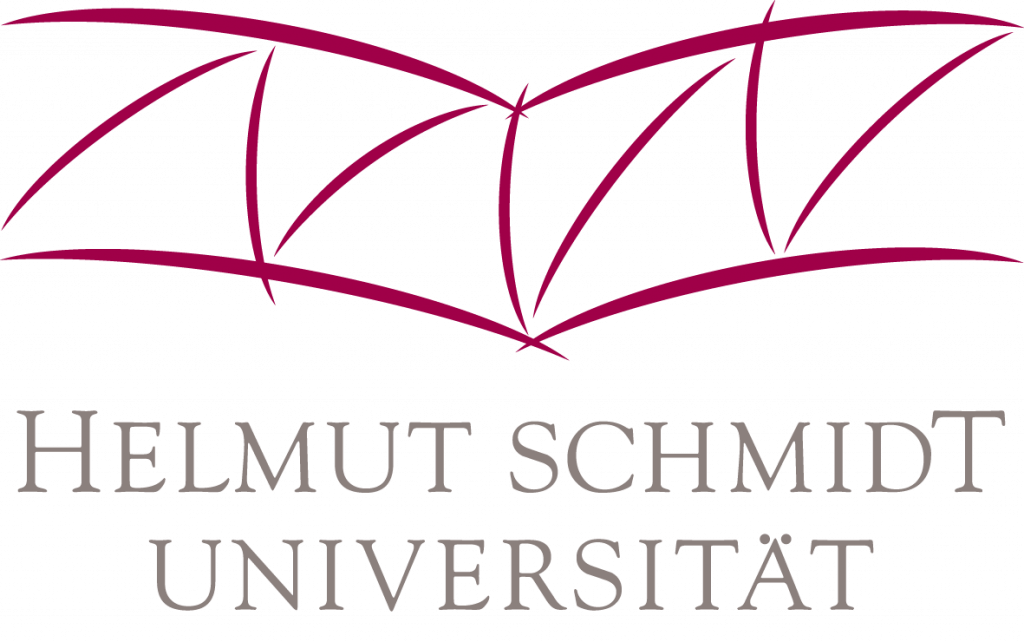
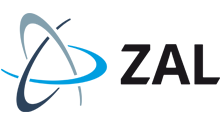
References
[1] Schumann, U. Klimawirkung des Luftverkehrs. Deutsches Zentrum für Luft-und Raumfahrt e.V. – Institut für Physik der Atmosphäre (2000).
[2] Darecki, M., et al. Flightpath 2050—Europe’s Vision for Aviation-Report of the High Level Group on Aviation Research. 2011
[3] Schefer, Hendrik, et al. Discussion on Electric Power Supply Systems for All Electric Aircraft. IEEE Access 8 (2020): 84188-84216
[4] Federal Ministry for Economic Affairs and Energy (publ.). Aviation Strategy of the Federal German Government. March 2014
Contact Persons
Prof. Dr.–Ing. habil. Detlef Schulz (sub-project manager)
Project Group BETA:
Lukas Baum, M.Sc.
Dipl.–Ing. Florian Grumm
Carsten Cosse, M.Sc.
Faculty of Electrical Engineering
Department of Electrical Power Systems
Contact: [email protected]
Letzte Änderung: 22. May 2023
